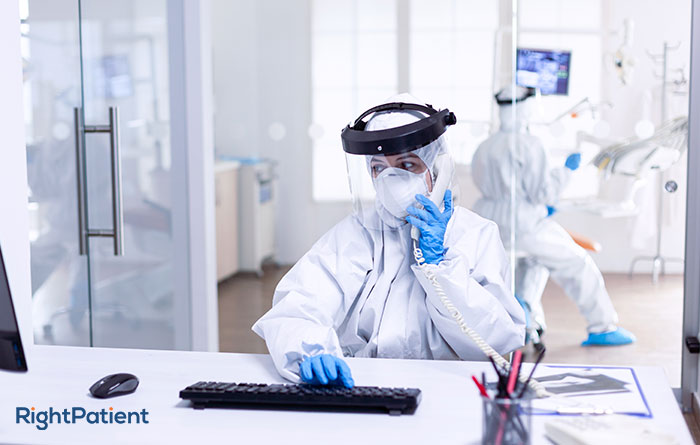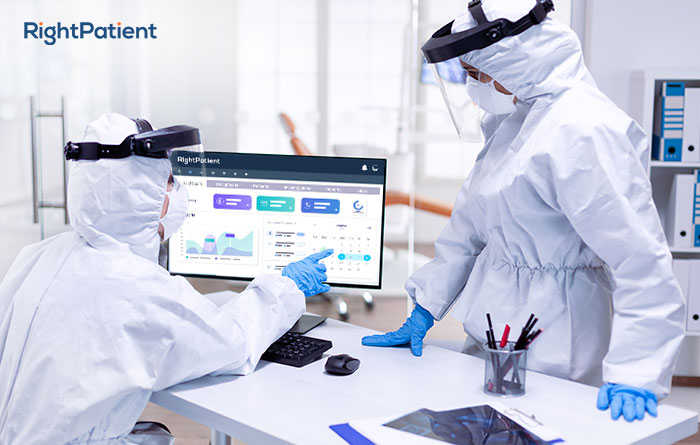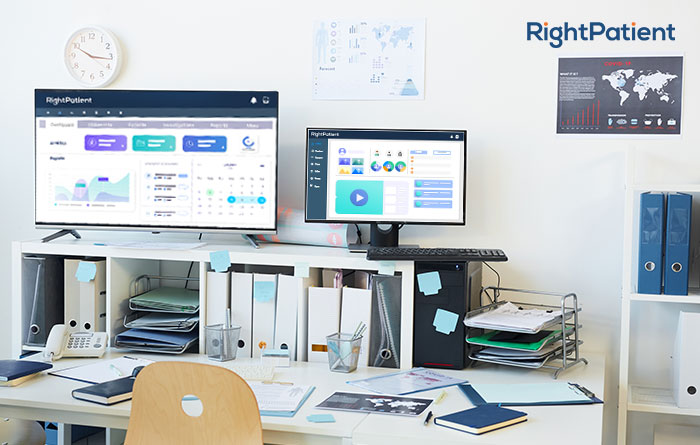4 Strategies Hospitals Use to Prevent Medical Identity Theft Cases

The US healthcare system has been plagued with several issues over the years. The lack of price transparency, interoperability issues, sky-high prices, and the lack of a standardized patient identifier are just some of them. One of the more concerning, and increasingly common, issues is medical identity, affecting more and more healthcare providers and patients. While providers are already facing huge losses due to the pandemic, they need to mitigate them by reducing preventable costs. One viable solution can be to reduce medical identity theft cases, and doing so will bring several benefits.

Let’s take a look at how medical identity theft happens, how common it is, and some strategies that can prevent it and mitigate losses.
How do medical identity theft cases happen?
Medical identity theft can occur in many ways, but it can usually be traced back to stolen patient information or records – a consequence of healthcare data breaches. There’s a reason why medical identity theft cases are so common: hackers are focusing more on healthcare data breaches because stealing and selling patient information is quite lucrative.
After a hospital suffers a data breach, the hacker(s) then tries to sell the stolen patient information on the black market. Unfortunately, there are many buyers available for many reasons, and they are also willing to pay high prices – up to $1000 per record!
After buying the stolen patient data, the fraudster assumes the identity of the patient. This can happen within healthcare facilities as well as during telehealth sessions (which are surging in popularity right now).
The majority of hospitals have no effective patient identifier and therefore they fail to red flag the individual, leading to medical identity theft. The scammer then illegally uses the victim’s credentials to obtain prescription drugs, medical equipment, and healthcare services, charging the victim for the services. Not only that, but since the fraudster uses the medical record, their information will be recorded within the EHR (Electronic Health Record) and can lead to patient safety issues down the line.
While that was a simple example, many complex medical identity theft cases are occurring almost daily.
Is medical identity theft common?
The numbers don’t lie –more patient records were breached in 2019 compared to the prior three years combined! Moreover, 9.7 million patient records were affected by data breaches this September. There’s no doubt that the majority of these patient records will be used for medical identity theft, as experts are also predicting a sharp increase in the near future.

Hospitals must ensure that they are preventing medical identity theft cases to guarantee patient safety and reduce associated litigation costs. Let’s take a look at some strategies that can help prevent medical identity theft and all of its consequences.
4 strategies hospitals can use to prevent medical identity theft cases
Follow the rules and regulations
First and foremost, the healthcare facility must ensure that they are properly following the rules. For instance, HIPAA mandates that there should be some technical, administrative, and physical safeguards present to protect patient information, known as PHI (Protected Health Information).
While this might seem like a straightforward strategy, a lot of healthcare providers fail to ensure HIPAA compliance. This not only leads to data breaches and medical identity theft down the line, but also incurs HIPAA penalties. HIPAA itself is a multi-layered and complex law that requires continuous effort to ensure compliance.
Fortunately, healthcare organizations can use HIPAA Ready, a robust HIPAA compliance software, to reduce the administrative burden. It streamlines HIPAA compliance, ensures training management, keeps all the HIPAA-related information in a centralized location, and also helps conduct internal audits.
By ensuring HIPAA compliance, healthcare organizations can detect security gaps and address the vulnerabilities, mitigating data breaches and, in turn, medical identity theft.
Devise a policy to enhance security
As previously mentioned, HIPAA has several requirements and requires that networks and devices are secure at all times. To do that, hospitals must come up with and follow a strict device policy so that sensitive patient information is not leaked inadvertently. While a BYOD (bring your own device) practice might be more flexible, it will inevitably lead to data breaches and leakage of sensitive information.
Thus, the following tips will help enhance security:
- Only allow official devices for storing sensitive information
- Only allow logging into secure networks
- Encourage usage of VPN
- Ensure data encryption at all times
- Keep logs of access requests to track any suspicious activity
Train employees regularly
Staff members such as registrars and nurses are the ones who regularly access patient data. Training them will provide them with the knowledge to avoid suspicious emails, as that is the primary weapon of hackers. Moreover, providing regular training – especially if it includes information on recent data breaches – can be beneficial. As previously mentioned, HIPAA Ready can help with training management.
Ensure accurate patient identification
Even if a data breach occurs, medical identity theft can be prevented if healthcare providers can red flag the fraudster during identity verification. That is exactly what RightPatient does.
RightPatient is the leading touchless patient identification platform used by several caregivers. It verifies identities by using patients’ photos. After scheduling appointments, patients need to provide a personal photo and a photo of their driver’s license. The platform matches them and verifies their identity remotely, red-flagging fraudsters. This system is ideal for telehealth sessions.
During inpatient visits, the scammer is red-flagged when the platform identifies that their face does not match the saved photo attached to the medical record, preventing medical identity theft in real-time.





























